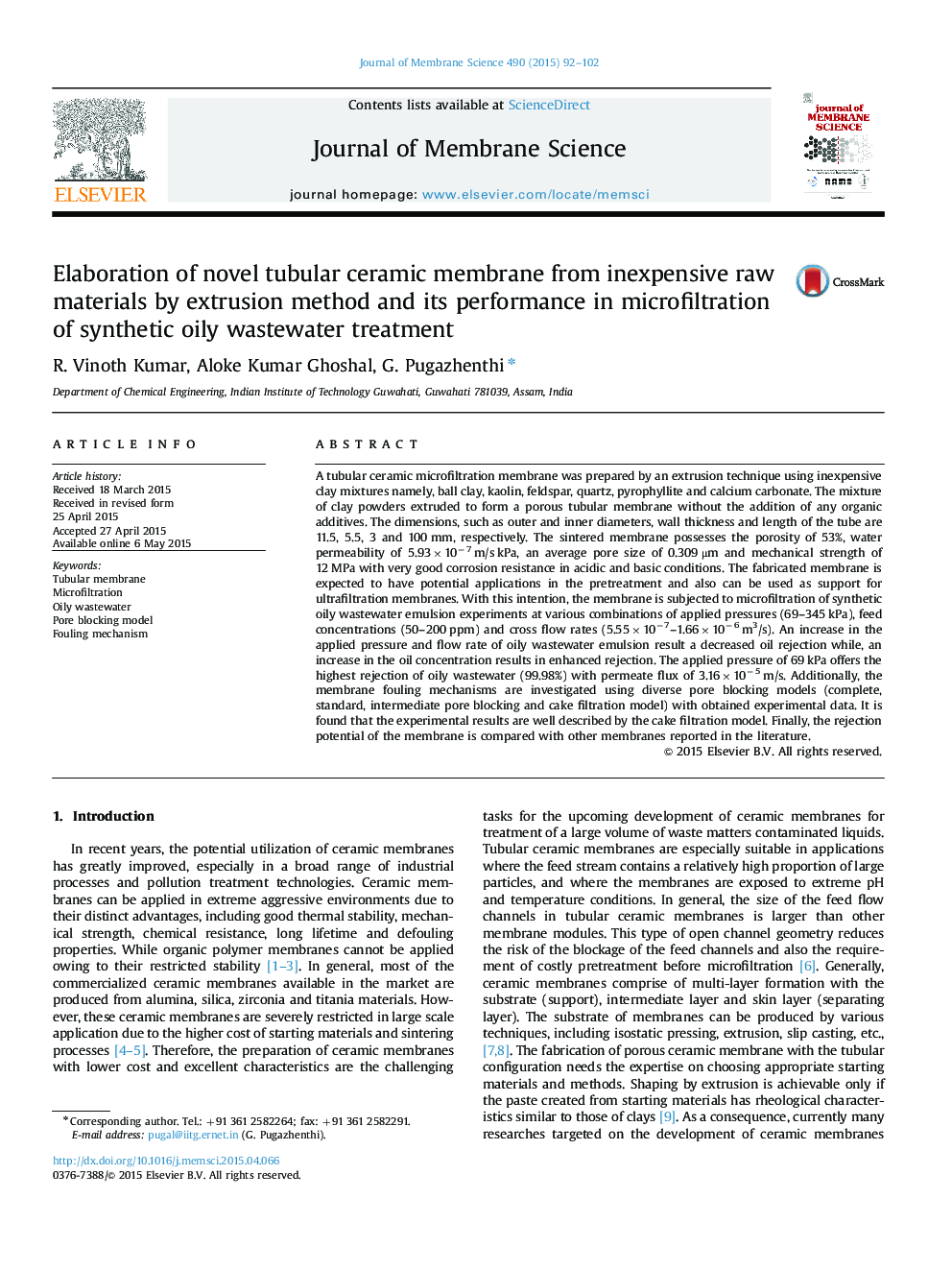| کد مقاله | کد نشریه | سال انتشار | مقاله انگلیسی | نسخه تمام متن |
|---|---|---|---|---|
| 633026 | 1456009 | 2015 | 11 صفحه PDF | دانلود رایگان |
• Novel low cost tubular membrane effectively elaborated by extrusion.
• Performance checked in treatment of oily wastewater emulsion.
• Highest rejection of 99.98% attained with permeate flux of 3.16×10−5 m/s.
• Fouling mechanisms analyzed using various models.
A tubular ceramic microfiltration membrane was prepared by an extrusion technique using inexpensive clay mixtures namely, ball clay, kaolin, feldspar, quartz, pyrophyllite and calcium carbonate. The mixture of clay powders extruded to form a porous tubular membrane without the addition of any organic additives. The dimensions, such as outer and inner diameters, wall thickness and length of the tube are 11.5, 5.5, 3 and 100 mm, respectively. The sintered membrane possesses the porosity of 53%, water permeability of 5.93×10−7 m/s kPa, an average pore size of 0.309 μm and mechanical strength of 12 MPa with very good corrosion resistance in acidic and basic conditions. The fabricated membrane is expected to have potential applications in the pretreatment and also can be used as support for ultrafiltration membranes. With this intention, the membrane is subjected to microfiltration of synthetic oily wastewater emulsion experiments at various combinations of applied pressures (69–345 kPa), feed concentrations (50–200 ppm) and cross flow rates (5.55×10−7–1.66×10−6 m3/s). An increase in the applied pressure and flow rate of oily wastewater emulsion result a decreased oil rejection while, an increase in the oil concentration results in enhanced rejection. The applied pressure of 69 kPa offers the highest rejection of oily wastewater (99.98%) with permeate flux of 3.16×10−5 m/s. Additionally, the membrane fouling mechanisms are investigated using diverse pore blocking models (complete, standard, intermediate pore blocking and cake filtration model) with obtained experimental data. It is found that the experimental results are well described by the cake filtration model. Finally, the rejection potential of the membrane is compared with other membranes reported in the literature.
Journal: Journal of Membrane Science - Volume 490, 15 September 2015, Pages 92–102
